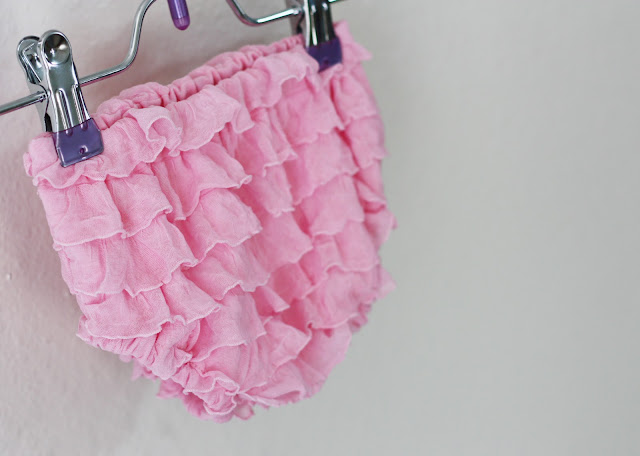Doesn’t every baby girl need a dress that’s just as sweet as she is?
This simple peasant dress pattern is sized 0-3m (approximately 8-12lbs), and is an easy project that is great for all sewing abilities, even beginners.
The elastic neckline makes for an easy on and off, keeping both you and your little one smiling
Materials:
3/4 yd 100% quilting cotton fabric (45” wide)
1/4″ wide elastic – approximately 30”
optional: rick rack for trim hem (40″ in length)
1/4″ wide elastic – approximately 30”
optional: rick rack for trim hem (40″ in length)
Instructions:
*All seam allowances to be 3/8″ unless otherwise noted.*
1. Print pattern pieces. Make sure your printer is set to print at 100% and not to scale the file down in size. Lay out fabric with both selvage edges folded in to center of fabric (creating two folded edges – on on each side with the selvages in the middle of the fabric) and right side inward. Cut out fabric pieces as directed on pattern pieces. If you prefer a plain hem rather than rick rack trim, add an extra 1/4-1/2″ to the bottom of the bodice pattern. The length of the dress is designed to hit at or just above the knee so it can be worn with tights or legwarmers, so feel free to add some extra length if you wish to make it longer!
1. Print pattern pieces. Make sure your printer is set to print at 100% and not to scale the file down in size. Lay out fabric with both selvage edges folded in to center of fabric (creating two folded edges – on on each side with the selvages in the middle of the fabric) and right side inward. Cut out fabric pieces as directed on pattern pieces. If you prefer a plain hem rather than rick rack trim, add an extra 1/4-1/2″ to the bottom of the bodice pattern. The length of the dress is designed to hit at or just above the knee so it can be worn with tights or legwarmers, so feel free to add some extra length if you wish to make it longer!
2. Right sides together, pin and stitch one sleeve piece at curve to armhole curve on one bodice piece.
3. Right sides together, pin and stitch remaining sleeve piece at curve to remaining curve on bodice piece.
4. Serge or zig zag raw edges and press seams (technically seams should always be pressed toward the bodice, but I pressed them toward the sleeves so take your pick).
5. Right sides together, pin and stitch remaining curve on sleeves to armhole curves of remaining bodice piece. Serge or zig zag raw edges and press seams.
6. If using a serger, serge bottom of each sleeve, removing ¼” of fabric. If not using a serger, press bottom of each sleeve ¼” toward wrong side of fabric.
7. Press bottom of each sleeve ½” toward wrong side (if not using serger the bottom of each sleeve will now have two folds). You can do this step after you sew the side seams in step 9 if you wish, but pressing them now gives more room to work with and I personally find it easier.
8. If using a serger, serge around neckline, removing ¼” of fabric. If not using a serger, press top of neckline ¼” toward wrong side of fabric. Press neckline ½” toward wrong side (if not using serger the neckline will now have two folds).
9. Right sides together, stitch dress together at each side from bottom of dress through folded edge of sleeve, unfolding pressed edge on sleeve. Serge or zig zag raw side seams and press seams.
10. Fold each sleeve back along pressed edge and stitch close serged/folded edge of fabric, forming a casing for elastic and leaving a small opening (it’ll be a bit tricky to maneuver around your sewing machine so take your time and it’ll turn out great).
11. Stitch close to serged/pressed edge of fabric at neckline, forming a casing for elastic and leaving a small opening.
12. Cut 2 pieces of elastic, each 7″ in length. On each sleeve, insert elastic through opening using a safety pin and stitch ends together using a zig zag stitch, overlapping elastic ½” on each end.
Note: 7″ of elastic will allow for a chubby baby’s arm circumference. If after inserting your elastic it looks a bit loose for your baby, you may want to trim 1/2″-1″ off the elastic before stitching the ends together.
Note: 7″ of elastic will allow for a chubby baby’s arm circumference. If after inserting your elastic it looks a bit loose for your baby, you may want to trim 1/2″-1″ off the elastic before stitching the ends together.
13. Stitch opening closed on each sleeve.
14. Cut 12” length of elastic. Insert elastic through opening using a safety pin and stitch ends together using a zig zag stitch, overlapping elastic ½” on each end. Stitch opening closed.
15. Serge bottom hem of dress, removing ¼” of fabric, or press hem ¼” toward wrong side of fabric (if you’re adding rick rack to the hem you’ll also want to zig zag stitch the raw edge before pressing it).
If not sewing rick rack trim at hem: Press hem another ½” toward wrong side of fabric. Stitch close to folded edge around entire hem of dress.
16. For rick rack trim, align outer scalloped edge of rick rack with bottom edge of dress and stitch around entire circumference of bottom of dress down center of rick rack. Overlap rick rack at beginning and end and trim excess.
17. Press rick rack to wrong side of fabric, leaving one scalloped edge exposed on right side of dress. Topstitch close to edge of fabric around entire hem of dress.
Great job, you are done!




 Materials:
Materials: